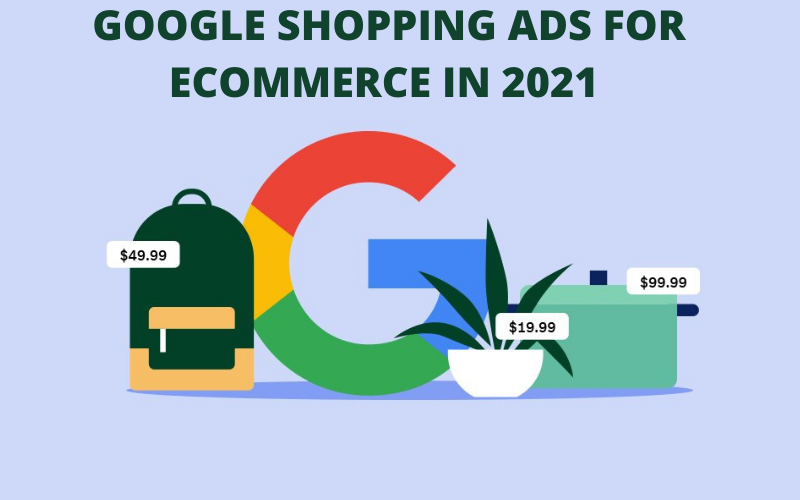What is Google Shopping Campaign Structure?
Creating an accurate shopping campaign structure is part of the biggest optimization that helps to manage products easily and scale in the right way.
This picture gives you more clear insight to set-up the correct structure of your shopping campaign.
You can also segregate your all products basis on the structure as below:
How to Plan Google Shopping Campaign Structure
Most of the marketer didn’t go with the optimized campaign structure but they went with it to set up the standard shopping campaign.
The structure of Google shopping campaigns is important because we have limited control over search terms for product adverts.
The optimized shopping campaign structure is as important as shopping feed optimization. Most of the marketers do not know how to structure the optimized Shopping campaign that will help in getting the 3X Plus ROAS.
In this eCommerce shopping campaign structure setup, we are going to explain different types of Google Shopping campaign structure that you can set up to make your E-commerce store profitable.
1. A Standard Way – One Shopping Campaign with one Ad group
It is a standard approach to setting up an eCommerce account by creating one campaign and adding one Ad Group, and then dividing your product groups out.
Pros of this structure
- Easy to set up
- Less time to manage
Cons about using this structure
- Hard to Optimise search terms by using negative keywords
- Bid Adjustment based on brand terms or high intent terms is not possible.
- Not possible to control search queries at the product group level
- In one ad group campaign, it’s hard to further divide out categories, products, brands, price, and IDs is a pain if you have tens of thousands of products.
- If there is any update in products then the product SKUs that did well will disappear from product group divisions.
- It isn’t possible to find what keywords are triggering specific products.
- To find out poor performing products is more time consuming with hundreds or thousands of products within one Ad Group.
- Some products will not get exposure or clicks. because of an exhausted budget.
2. Setup Two Campaigns On the basis of Campaign Priorities (High, Medium, Low)
The idea behind setting up the two shopping campaigns using campaign priorities is that you should not miss the opportunity. While setting up the High, Medium, and Low priorities shopping campaign you can set the bid based on their priorities.
Google gives the preference in the auction to campaign in the account as per campaign priority or bid. If the budget of a high priority shopping campaign exhausts then a medium priority shopping campaign will perform the same as a low priority campaign.
On the basis of priority, you can also prioritize your search terms:
- High Priority to Generic Terms ( Exclude Brand and other irrelevant terms)
- Medium Priority to Brands Terms ( Exclude Generic and other irrelevant terms)
- Low Priority to Catch-All Terms ( Exclude Generic, Brand, and other irrelevant terms)
Pros of this structure
- Easy to set up. Setup the first campaign then copy and change the priority settings and bid.
- More control over bidding on higher intent terms such as brand terms or any product-specific search query.
Cons of this structure
- Twice as many campaigns to manage and create confusion.
- It isn’t possible to control search queries at the product level
- Segregating the products into one Ad Group in each campaign is a challenge.
- Due to poor product groupings within a single Ad Group then Some products will not get exposure or clicks
- Harder to find out the Poor performing products then it will difficult to exclude or manage unless you take them out.
3. On the basis of Custom Label
You can use custom labels when you want to subdivide the products in your campaign. There are plenty of reasons you need custom labels for, for example when you are selling seasonal products or doing stock clearance, etc.
Pros of this structure
- Easy to optimize Search terms
- Easy to analysis the product performance
- More control over bidding is based on intent terms.
Cons of this structure
- It’s time consuming to setup the campaign
- Need proper planning to structure this campaign.
- It’s a confusing task to optimise the campaign.
4. On the basis of Product Category
Google product categories are the categories you use to identify products in a product feed in your Google Merchant Center account. For example, if you are selling mens, women, kids products then you can use that product category to set up a shopping campaign as per product category assigned to them in the feed.
Pros of this structure
- Easy to set up campaigns as per product category.
- Easy to optimize Search terms as per product category.
- More control over bidding is based on intent terms.
Cons of this structure
- It’s time taking to set up the campaign if we have a huge list of products categories.
- It’s time consuming to plan the structure of campaigns
5. On the basis of Product Brand
You can use the BRAND attribute in google merchant center to indicate the product’s brand name. It helps to identify your product that will be shown to users. Your brand name should be clearly visible on your product packing or label.
For example, if you are a retailer and you sell both nike and adidas products then you can set up a segregated shopping campaign as per your product brand attribute in google merchant center feed.
Pros of this structure
- Easy to set up campaigns as per product Brand.
- More control over bidding is based on intent terms.
Cons of this structure
- It’s time taking to set up the campaign if we have a huge list of brand products.
- It’s time consuming to plan the structure of campaigns
6. On the Basis of Profit Margins
This campaign structure is highly beneficial. In this approach, you entail setting up your shopping campaigns to include product categories based on your product profit margins.
This shopping campaign structure is beneficial because you know how much cost you can spend to get the sale for a particular product. Then you can keep an eye on your campaign performance by tracking the amount spent on your particular product.
Pros of this structure
- More control over bidding is based on intent terms.
- Concentrate budget and efforts on the campaign that generating the best return
- It will improve the profitability of your overall E-Commerce store ad account.
- It is possible to set device, location, and audience bid adjustments based on different types of search terms performance.
Cons of this structure
- Segregating the products into one Ad Group is still challenging.
- It isn’t possible to control search queries at the product level
- Some products will not get the impression or clicks.
- Poor performing products are harder to exclude and manage.
Now the case of using multiple ad groups within Google Shopping Campaign
In the above-suggested campaign structure, we go through the outer structure of the shopping campaign by using the single ad group. Now you have to work on how you will structure your ad groups within your shopping campaign.
You can divide up the products by the available Product Grouping attributes by custom labels, product type, or product category, etc.
In a small account where no product is less, the Single Ad Group approach can work, but from my experience, it gives you less control over managing products in your account.
So we always recommend you to further segregate your product on the basis of product category, product type, or custom label. It can be by creating further shopping campaigns or by creating an ad group.
Advantages of using Segregated Ad Groups in Google Shopping Campaigns include:
- By using this you can reduce your unwanted clicks and spend more on effectively managing search terms.
- Get the granular level of keyword search term queries that are triggering product impressions and clicks.
- Prevent the feed and product group from updating which causes mess up your data.
Some disadvantages of it as well:
- It can take time to get significant click data for bid adjustments or bidding automation.
- It can be harder to review, adjust, and manage bids when there are hundreds & thousands of product Ad Groups.
- It takes a lot of time to split out products.





